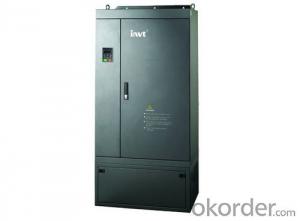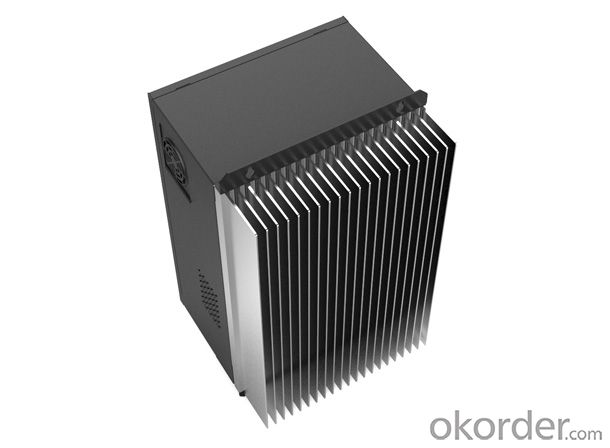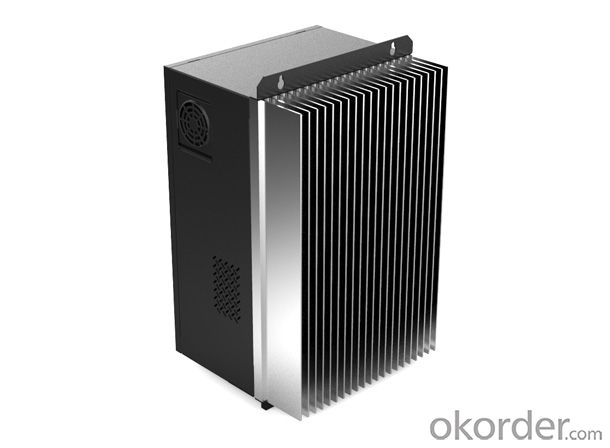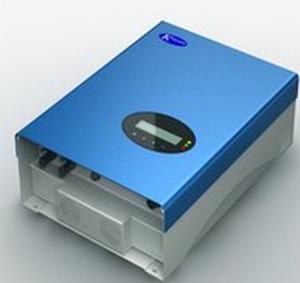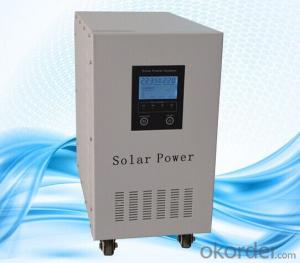4000W CHV100A Series High-Performance Solar Inverter from Shenzhen
- Loading Port:
- China main port
- Payment Terms:
- TT OR LC
- Min Order Qty:
- 10 pc
- Supply Capability:
- 10000 pc/month
OKorder Service Pledge
OKorder Financial Service
You Might Also Like
CHV100A Series High-performance Inverter
Specification
AC 3PH 660V15% 37~630kW
AC 3PH 1140V15% 45~2800kW
INVT CHV100A series vector control inverters are the products special for the mining industry, including 660V/1140V voltage degree and 15kW~2500kW power range. The open structural features and modular product design combined with the integrated INVT solutions in mining industry fully meet the individual needs of customers in the industry.
Futures
Control mode: vector control (VC), sensorless vector control(SVC), space voltage vector control (SVPWM);
Starting torque: vector control 0Hz/180% (VC); sensorless vector control 0.5Hz/150% (SVC);
Be compatible with synchronous and asynchronous motor control;
Support master-slave synchronous control of multi-motor drive;
Support multiple communication methods such as Modbus, Profibus-DP, Ethernet and CAN communication;
Support a variety of extension interfaces such as extension card, communication card, LCD keypad, synchronous PG card and asynchronous PG card;
Up to 38 protection functions such as overcurrent, overvoltage, overload, undervoltage, phase loss and shortcircuit;
Provide input and output filters special for inverters, complying with the special EMC requirements in the industry.
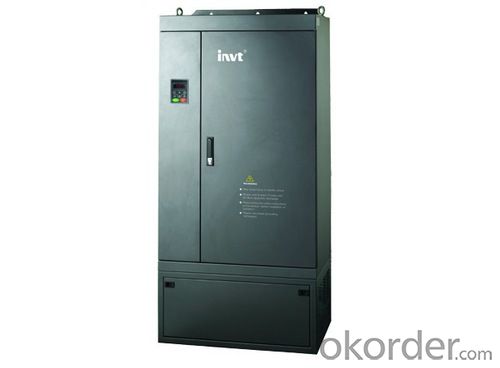
FAQ
1. Have any design tool and how to use it?
Shine Design is the system design software just for inverters, It can conduct installers to figure out panel numbers for a system, panel numbers for each string, and which inverter model is suitable for the system. Moreover, it can print a design report after input all necessary parameters, can calculate DC/AC wire wastage, annual generation, etc.
2. Does the inverter have monitoring solutions for residential system?
For small rating system, we have wired two monitoring solution (ShineNet via RS232 or RS485). (a) Local wireless monitoring solution (ShineVision via RF module communication) (b) Global wireless monitoring solution (WIFI module via WIFI network)
3. Do you have free solution for monitoring?
ShineNet is an inverter monitoring software run in Windows XP, Windows Vista, Windows 7 operating system. It can monitor inverter via RS232 (or RS232 convert to USB cable) and RS485 wire connection. Customers can purchase the cable locally to get the inverter monitored, it is simple.
- Q: Can a solar inverter be used with solar-powered air conditioning systems?
- Yes, a solar inverter can be used with solar-powered air conditioning systems. The solar inverter is responsible for converting the direct current (DC) generated by the solar panels into alternating current (AC) that can be used to power various electrical appliances, including air conditioning units. By connecting the solar inverter to the solar panels and the air conditioning system, the generated solar energy can be efficiently utilized to power the AC system.
- Q: Can a solar inverter be used with a solar-powered air conditioning system?
- Yes, a solar inverter can be used with a solar-powered air conditioning system. The solar inverter is responsible for converting the DC (direct current) power generated by solar panels into AC (alternating current) power that can be used to run electrical appliances, including an air conditioning system. This allows the solar-powered air conditioning system to operate efficiently using the solar energy generated by the solar panels.
- Q: What is the role of a frequency regulation feature in a solar inverter?
- The role of a frequency regulation feature in a solar inverter is to ensure that the power output from the solar panels matches the grid's frequency and voltage requirements. It helps maintain a stable and consistent frequency, allowing for seamless integration of solar power into the existing electrical grid.
- Q: How does a solar inverter handle voltage regulation during load changes?
- A solar inverter handles voltage regulation during load changes by continuously monitoring the load and adjusting the inverter's output voltage accordingly. It uses various control mechanisms to maintain a stable voltage output, such as pulse width modulation (PWM) and maximum power point tracking (MPPT) algorithms. These algorithms enable the inverter to regulate its output voltage to match the load requirements, ensuring a consistent and reliable power supply.
- Q: What is the maximum efficiency at partial load for a solar inverter?
- The maximum efficiency at partial load for a solar inverter refers to the highest level of efficiency that can be achieved when the inverter is operating at less than its full capacity. This efficiency is typically lower than the maximum efficiency at full load, as the inverter may not be able to convert the same amount of energy with the same level of efficiency when it is not running at its maximum capacity.
- Q: Can a solar inverter be used in mobile applications?
- Yes, a solar inverter can be used in mobile applications. There are specifically designed solar inverters available that are compact and portable, making them suitable for use in mobile applications such as RVs, boats, and other vehicles. These inverters can convert the DC power generated by solar panels into AC power to run various devices and appliances on the go.
- Q: Are there any government incentives or rebates available for solar inverters?
- Yes, there are government incentives and rebates available for solar inverters in many countries. These incentives and rebates vary depending on the country and sometimes even on the state or region within a country. It is recommended to check with local government or energy authorities to find out specific incentives and rebates available for solar inverters in your area.
- Q: How much maintenance is required for a solar inverter?
- Solar inverters typically require very little maintenance. They are designed to be reliable and durable, requiring minimal attention throughout their lifespan. Regular visual inspections to check for any debris or dust accumulation, as well as ensuring proper ventilation, are recommended. Additionally, monitoring the inverter's performance through software or online platforms can help identify any potential issues. However, in general, solar inverters are known for their low maintenance requirements, making them a reliable choice for renewable energy systems.
- Q: What is the role of a solar inverter in fault ride-through capability?
- The role of a solar inverter in fault ride-through capability is to help maintain the stability and reliability of the power grid during faults or disturbances. By detecting and responding to voltage and frequency variations caused by faults, the solar inverter can adjust its output and remain connected to the grid, ensuring continuous power supply. This capability is essential for grid stability and allows solar power systems to contribute to the overall reliability of the electrical network.
- Q: How do you maintain a solar inverter?
- To maintain a solar inverter, regular cleaning of dust and debris is essential to ensure efficient operation. Additionally, monitoring the inverter's performance and checking for any abnormal readings or error messages is important. It is also recommended to inspect the wiring connections for any loose or damaged parts and to keep the inverter's ventilation system clear from obstructions. Regular servicing by a professional technician is recommended to identify and address any potential issues before they become major problems.
Send your message to us
4000W CHV100A Series High-Performance Solar Inverter from Shenzhen
- Loading Port:
- China main port
- Payment Terms:
- TT OR LC
- Min Order Qty:
- 10 pc
- Supply Capability:
- 10000 pc/month
OKorder Service Pledge
OKorder Financial Service
Similar products
Hot products
Hot Searches
Related keywords
